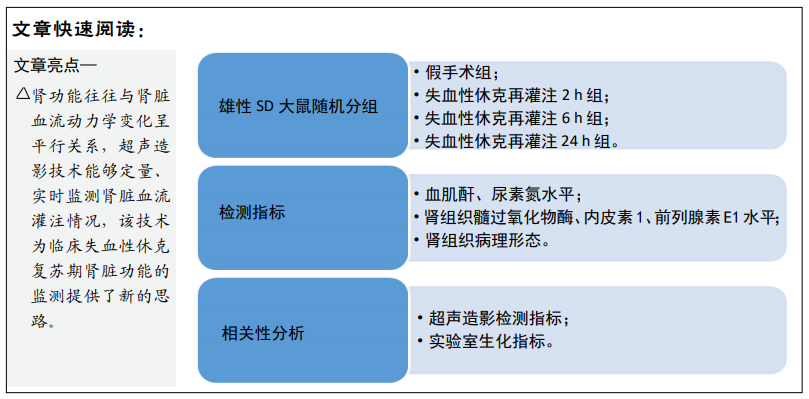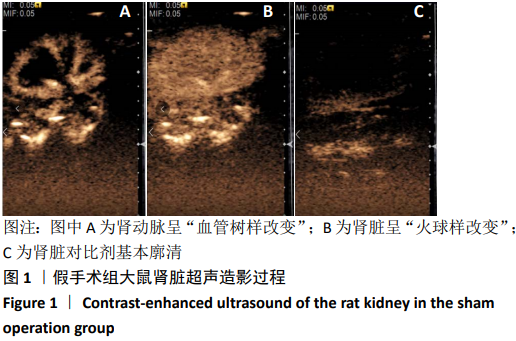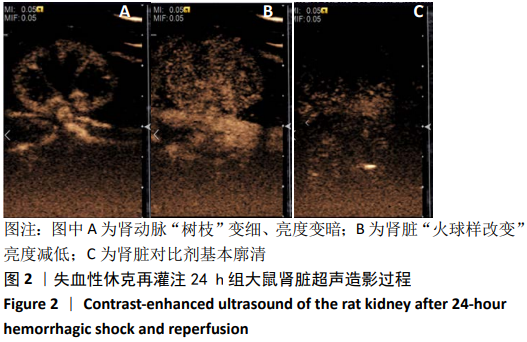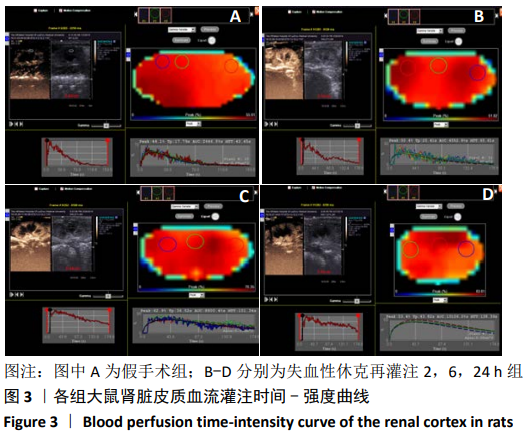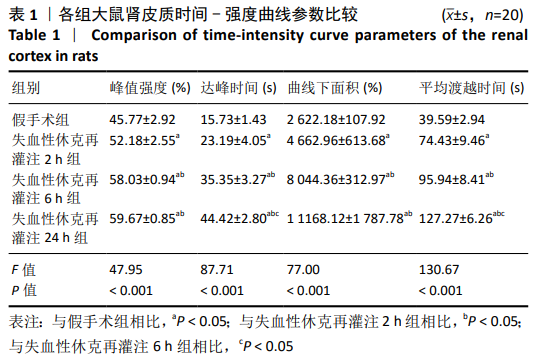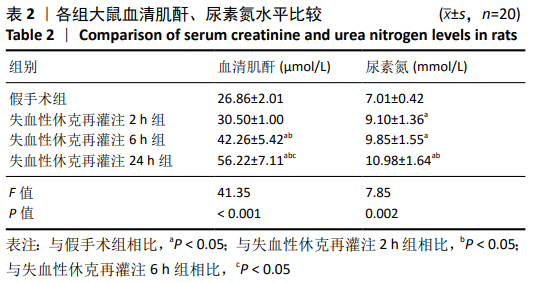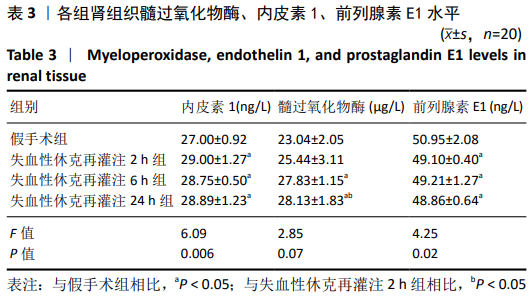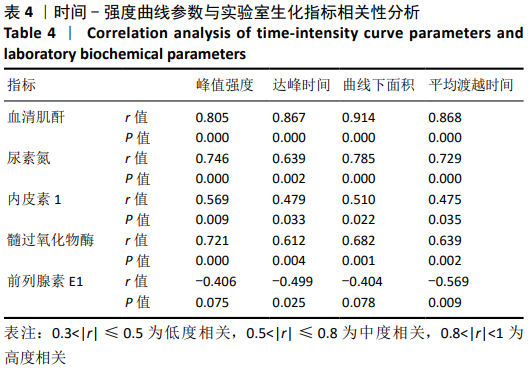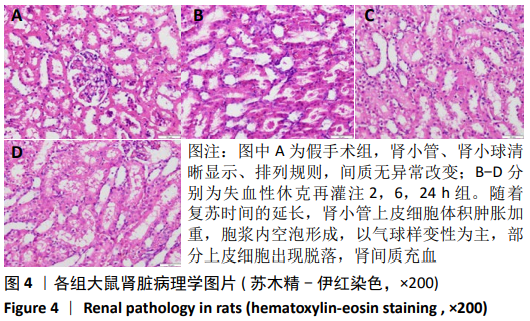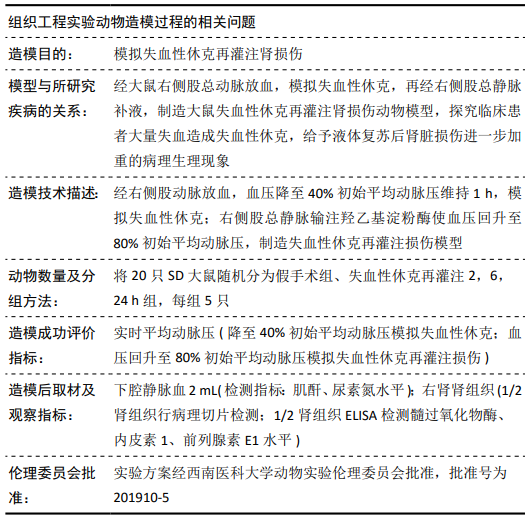[1] SHARFUDDIN AA, MOLITORIS BA. Pathophysiology of ischemic acute kidney injury. Nat Rev Nephrol. 2011;7(4):189-200.
[2] HU JB, LI SJ, KANG XQ, et al. CD44-targeted hyaluronic acid-curcumin prodrug protects renal tubular epithelial cell survival from oxidative stress damage. Carbohydr Polym. 2018;193:268-280.
[3] TEDESCO G, SARNO A, RIZZO G, et al. Clinical use of contrast-enhanced ultrasound beyond the liver: a focus on renal, splenic, and pancreatic applications. Ultrasonography. 2019;38(4):278-288.
[4] CANNON JW. Hemorrhagic Shock. N Engl J Med. 2018;378(4): 370-379.
[5] WANG ML, WEI CH, WANG WD, et al. Melatonin attenuates lung ischaemia-reperfusion injury via inhibition of oxidative stress and inflammation. Interact Cardiovasc Thorac Surg. 2018;26(5):761-767.
[6] YANG Y, SONG M, LIU Y, et al. Renoprotective approaches and strategies in acute kidney injury. Pharmacol Ther. 2016;163:58-73.
[7] RAHMANIA L, ORBEGOZO D, SU F, et al. Administration of Tetrahydrobiopterin (BH4) Protects the Renal Microcirculation From Ischemia and Reperfusion Injury. Anesth Analg. 2017;125(4): 1253-1260.
[8] ZHANG LX, ZHAO HJ, SUN DL, et al. Niclosamide attenuates inflammatory cytokines via the autophagy pathway leading to improved outcomes in renal ischemia/reperfusion injury. Mol Med Rep. 2017;16(2): 1810-1816.
[9] JIANG T, KAMBADAKONE A, KULKARNI NM, et al. Monitoring response to antiangiogenic treatment and predicting outcomes in advanced hepatocellular carcinoma using image biomarkers, CT perfusion, tumor density, and tumor size (RECIST). Invest Radiol. 2012;47(1):11-17.
[10] SONG B, CAO Y, PEI L, et al. Efficacy of High-intensity Statin Use for Transient Ischemic Attack Patients with Positive Diffusion-weighted Imaging. Sci Rep. 2019;9(1):1173.
[11] JIA X, GAO R, LIANG Y, et al. Retroperitoneal Malignant Peripheral Nerve Sheath Tumor on 99mTc-DTPA Renal Scintigraphy. Clin Nucl Med. 2019;44(8):648-649.
[12] HALL JA, FRITSCH DA, YERRAMILLI M, et al. A longitudinal study on the acceptance and effects of a therapeutic renal food in pet dogs with IRIS-Stage 1 chronic kidney disease. J Anim Physiol Anim Nutr (Berl). 2018;102(1):297-307.
[13] DONG Y, WANG W, CAO J, et al. Quantitative evaluation of contrast-enhanced ultrasonography in the diagnosis of chronic ischemic renal disease in a dog model. PLoS One. 2013;8(8):e70337.
[14] ZHAO H, LIU X, LI B, et al.Advantages of the Korean Thyroid Imaging Reporting and Data System Combined with Contrast-Enhanced Ultrasound in Diagnosing Papillary Thyroid Microcarcinoma. Iranian Journal of Radiology. 2019; 16(4): e83460.
[15] WILDNER D, SCHELLHAAS B, STRACK D, et al. Differentiation of malignant liver tumors by software-based perfusion quantification with dynamic contrast-enhanced ultrasound (DCEUS). Clin Hemorheol Microcirc. 2019;71(1):39-51.
[16] 王晶,史秋生,李刚,等.超声造影在乳腺良恶性肿瘤鉴别诊断中的应用[J].肿瘤影像学, 2019,28(3):145-148.
[17] SIDHU PS, CANTISANI V, DIETRICH CF, et al. The EFSUMB Guidelines and Recommendations for the Clinical Practice of Contrast-Enhanced Ultrasound (CEUS) in Non-Hepatic Applications: Update 2017 (Long Version). Ultraschall Med. 2018;39(2):e2-e44.
[18] SEHGAL CM, ARGER PH, PUGH CR, et al. Comparison of power Doppler and B-scan sonography for renal imaging using a sonographic contrast agent. J Ultrasound Med. 1998;17(12):751-756.
[19] LIMA A, VAN ROOIJ T, ERGIN B, et al. Dynamic Contrast-Enhanced Ultrasound Identifies Microcirculatory Alterations in Sepsis-Induced Acute Kidney Injury. Crit Care Med. 2018;46(8):1284-1292.
[20] 叶帆,李明星,罗志建,等.超声造影监测兔肾缺血再灌注损伤早期皮质血流动力学的改变[J].中华临床医师杂志(电子版), 2015,9(6):952-955.
[21] 孙晓颖,邝斌,罗志建,等.超声造影在评价地塞米松改善大鼠肾缺血再灌注损伤中的应用价值[J].实用医学杂志, 2019,35(7):1069-1072.
[22] LI H, MA Y, CHEN B, et al. miR-182 enhances acute kidney injury by promoting apoptosis involving the targeting and regulation of TCF7L2/Wnt/β-catenins pathway. Eur J Pharmacol. 2018;831:20-27.
[23] AKARAS N. Gossypin Protects Against Renal Ischemia- Reperfusion Injury in Rats. Kafkas Universitesi Veteriner Fakultesi Dergisi. 2020; 26(1):89-96.
[24] 潘宝华,夏炜,郭树忠,等.拮抗选择素对缺血/再灌注损伤皮瓣的保护作用[J].中国美容整形外科杂志, 2007,18(2):84-86.
[25] CAKIR M, POLAT A, TEKIN S, et al. The effect of dexmedetomidine against oxidative and tubular damage induced by renal ischemia reperfusion in rats. Ren Fail. 2015;37(4):704-708.
[26] KATO A, EDWARDS MJ, LENTSCH AB. Gene deletion of NF-kappa B p50 does not alter the hepatic inflammatory response to ischemia/reperfusion. J Hepatol. 2002;37(1):48-55.
[27] 钟先阳,罗仁,成玉斌,等.大鼠出血性休克再灌注肾损伤与时间的关系[J].广东医学, 2003,24(5):469-471.
|
